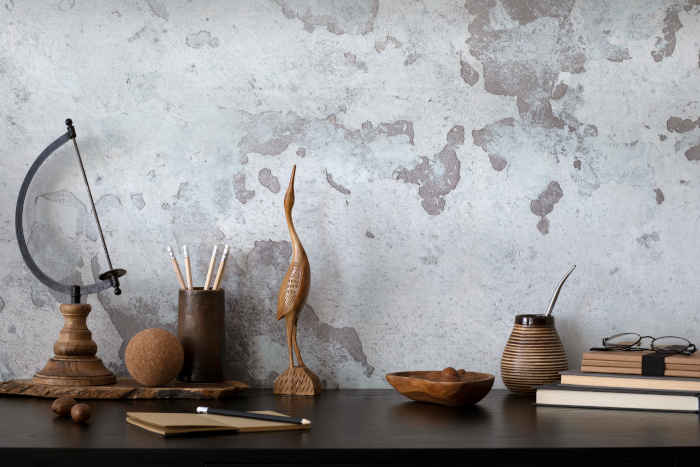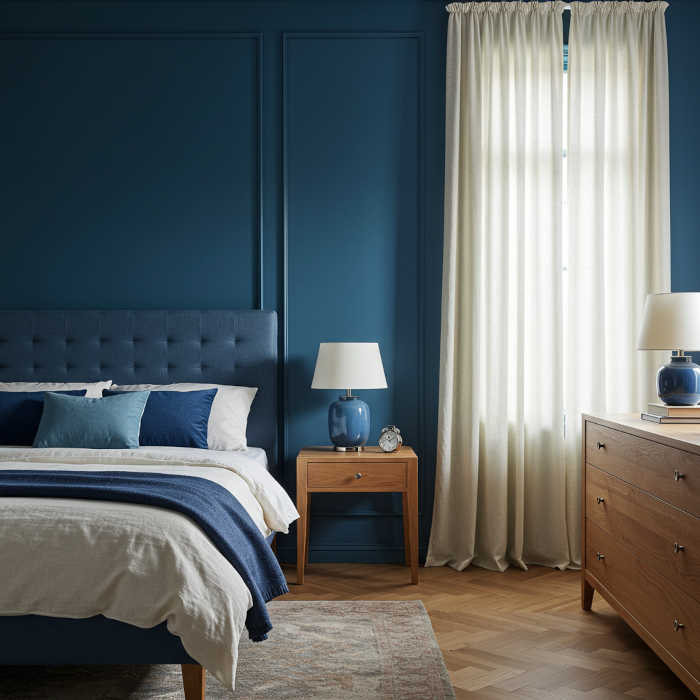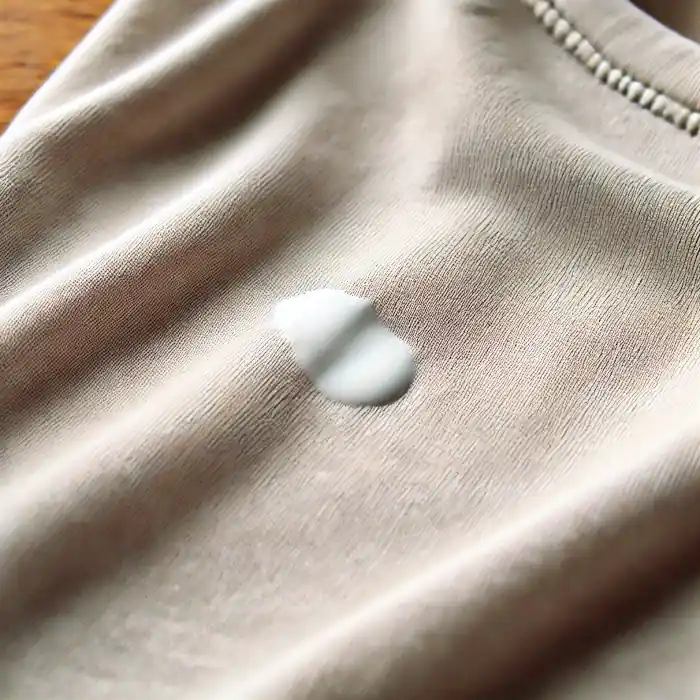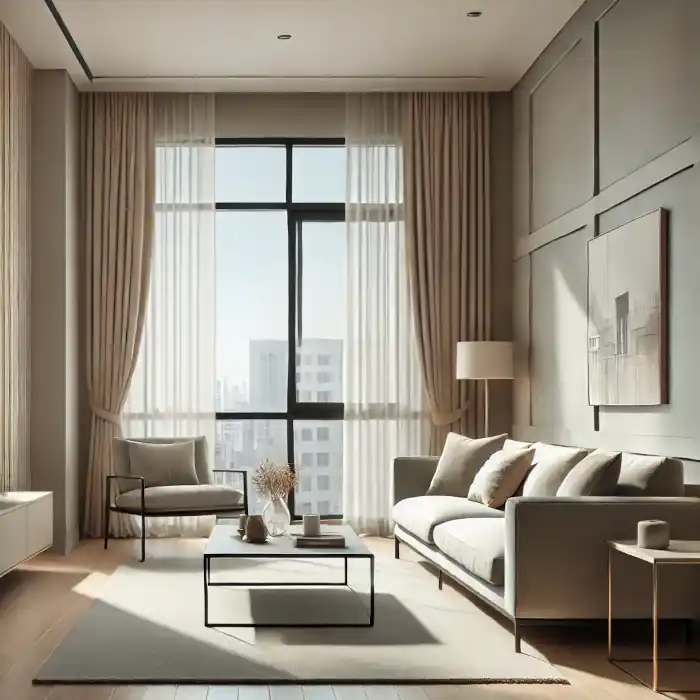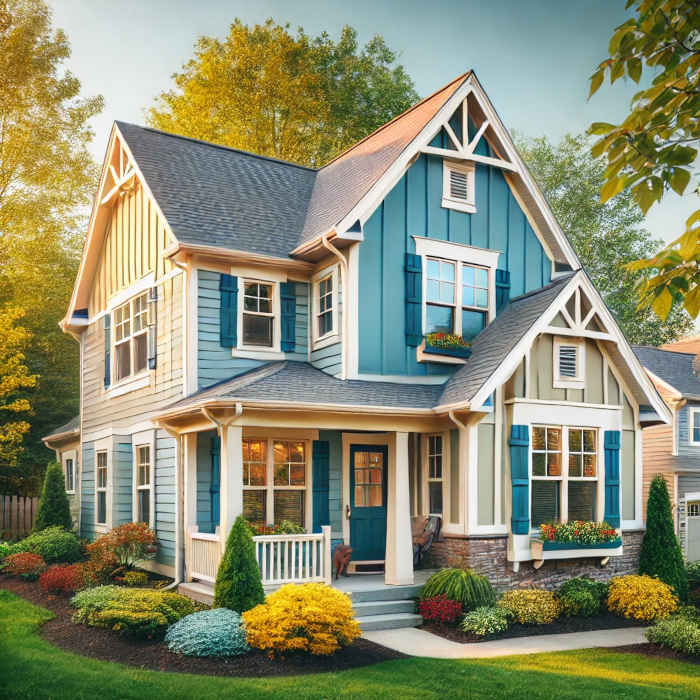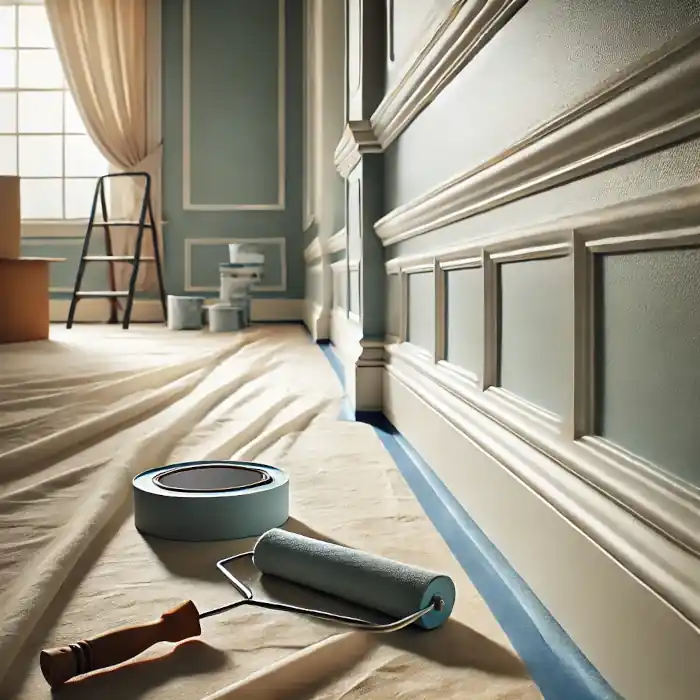As an Amazon Associate, I earn from qualifying purchases. Privacy Policy / Terms
Faux finishes are a fascinating aspect of interior design. They offer a unique way to transform spaces, adding depth and texture to walls and furniture.
But what exactly is a faux finish?
In essence, it’s a decorative painting technique. It mimics the appearance of materials such as marble, wood, or stone. This art form has a rich history and continues to evolve with modern design trends.
This article will guide you through the world of faux finishes. We’ll explore different techniques, from basic color washing to advanced marbling. We’ll also delve into the role of faux finish glaze in creating these stunning effects.
Whether you’re a DIY enthusiast, a homeowner looking to refresh your space, or an interior designer seeking new inspiration, this guide is for you. Let’s embark on this creative journey together, exploring the art of faux finishes.
What is a Faux Finish?
A faux finish is a decorative painting technique used to create the illusion of texture and depth. “Faux” is French for “false,” indicating that these finishes replicate the look of other materials. They’re especially popular for mimicking surfaces like marble, wood, and stone.
The history of faux finishes dates back centuries. They’ve been used since the days of ancient Romans and Egyptians. Over the years, these techniques have evolved, adapting to modern aesthetics and materials. Yet, the core idea remains: to transform ordinary surfaces into works of art.
Faux finishes are versatile, making them suitable for a variety of settings. They can be applied to walls, ceilings, and even furniture. By using simple tools and materials, homeowners and artists can add warmth and character to their spaces.
Today, faux finishes continue to inspire creativity in both residential and commercial design. The beauty of these techniques lies in their ability to combine color, texture, and light. This combination results in an array of stunning visual effects that captivate the eye and enrich interiors.
The Benefits of Faux Finishes in Interior Design
Faux finishes offer significant benefits for interior design, elevating spaces with their unique charm. They provide an affordable way to achieve the look of luxurious materials without the high cost. This makes them a perfect solution for budget-conscious homeowners.
These finishes allow for great flexibility in design. They can complement various styles, from rustic to contemporary. With faux finishes, designers can effortlessly add depth and character, creating a personalized atmosphere in any room.
Moreover, faux finishes can enhance the appeal of a space by creating focal points and drawing attention to architectural details. They also offer practical benefits, such as hiding minor imperfections on walls and ceilings. This dual purpose of aesthetic enhancement and problem solving makes faux finishes invaluable in the world of interior design.
Types of Faux Finishes and Their Effects
Faux finishes transform plain walls into stunning visual statements. They mimic natural textures like stone, wood, and marble, providing depth and interest. Each type of finish brings its own unique charm and aesthetic.
Sponging, for example, offers a soft, mottled effect. It’s perfect for creating a rustic or vintage feel. On the other hand, color washing introduces subtle color variations, adding warmth and richness to a space.
Rag rolling provides a textured, fabric-like appearance. This technique works well for adding elegance and sophistication. Marbling, meanwhile, replicates the opulence of real marble, lending luxury without the expense.
Finally, graining reproduces the intricate patterns of wood. This finish is ideal for creating a cozy and inviting atmosphere. By selecting the right faux finish, you can enhance any room’s design, tailoring it to specific aesthetic desires.
Faux Finish Glaze: The Key to Depth and Texture
Faux finish glaze is crucial for achieving depth and texture. It acts as a transparent layer that modifies the base paint’s appearance. By altering how light interacts with surfaces, glaze creates vibrant visual interest.
This versatile medium enhances other faux techniques. It allows for more control over color intensity and texture. With proper application, glaze transforms surfaces, bringing your creative vision to life.
Preparing Your Space for a Faux Finish
Preparation is vital for a successful faux finish. Start by cleaning the walls to remove dust and debris. A smooth surface ensures paint adheres well and looks professional.
Next, repair any imperfections like holes or cracks. Use a filler to achieve an even surface. Once the repairs are complete, apply a quality primer. Primer enhances paint durability and provides a uniform base, helping the faux finish shine. Proper preparation lays the foundation for a stunning and durable finish.
Essential Tools and Materials for Faux Finishing
Having the right tools is essential for any faux finish project. A range of brushes, rollers, and sponges will help achieve various textures and effects. These tools are the backbone of a versatile toolkit for decorative painting.
In addition to basic painting supplies, specialized tools like glazing brushes and natural sponges are invaluable. They create unique patterns that add depth and detail. A palette knife can also be useful for more intricate techniques such as marbling.
Here is a list of essential tools and materials you’ll need:
- High-quality paintbrushes and rollers
- Natural and synthetic sponges
- Palette knives for detailing
- Faux finish glaze
- Paint trays and mixing containers
- Drop cloths and painter’s tape
Each tool serves a specific purpose, helping you unleash your creativity. With the right materials, you can transform walls and furniture into art. A well-equipped workspace ensures you are prepared for anything.
Step-by-Step Faux Finish Techniques
Faux finishing offers a broad spectrum of techniques, each with its charm. Starting with basic methods allows you to gradually build your skills and confidence. The key is to approach each technique step-by-step.
Begin by selecting a manageable area to work on, ensuring it’s clean and primed. Test your technique on sample boards to perfect your methods. This practice is crucial for mastering the art of faux finishes without hesitation.
Basic Techniques: Color Washing and Rag Rolling
Color washing is one of the most popular faux finish techniques. It involves gently applying a translucent glaze over a base color to create depth. The result is a soft, layered effect that adds warmth to any space.
To achieve this, start by painting your wall with a solid base coat. Once dried, apply a glaze mixed with a complementary color using a brush or sponge. Work in sections, blending as you go to avoid harsh lines. The key is to maintain a light touch to produce a soft, washed appearance.
Rag rolling, another simple method, employs a crumpled rag or cloth. Dip the rag into a glaze, then roll or dab it onto the wall. This technique creates a textured look reminiscent of aged plaster or fabric. It’s ideal for adding dimension and interest without overwhelming a room.
Advanced Techniques: Graining and Marbling
Graining is an advanced technique that mimics the appearance of wood. This method requires a specialized tool called a graining comb. By dragging the comb through wet glaze, you can replicate the natural lines and knots found in real wood. This skill transforms plain surfaces into rich, wooden textures.
Marbling, on the other hand, is about creating the intricate veining found in marble. This technique combines different colors of glaze to mimic the elegant look of stone. Start with a base coat that mirrors your chosen marble color. Using a sponge and fine brushes, apply additional colors in vein-like patterns. Blend them seamlessly for a natural effect.
Both graining and marbling demand patience and a good eye for detail. Practice is paramount, as these sophisticated finishes can elevate any design to a luxurious level. Mastery of these methods can turn any space into a masterpiece.
Tips for Choosing Colors and Glazes
Selecting the right colors and glazes is crucial for achieving a perfect faux finish. Start by considering the room’s purpose and lighting. Softer hues work well in spaces meant for relaxation, while vibrant colors can energize.
When choosing glazes, focus on the finish you desire. A higher sheen glaze will reflect more light, offering a polished look. Matte glazes, conversely, provide a subtler, more understated effect. Test different combinations on sample boards to see how they interact with the base color. This approach ensures your selection complements the overall design seamlessly.
The Importance of Practice and Patience
Mastering faux finish techniques requires practice and a patient approach. Start by trying different methods on sample boards before tackling walls.
Patience is key in achieving the desired look. Rushing might lead to uneven textures or improper color blending. Take your time to layer colors gradually and wait for each layer to dry. This patience ensures your faux finishes have depth, creating a polished, professional appearance. Remember, it’s the attention to detail that transforms a good faux finish into a stunning one.
Fixing Mistakes and Maintaining Your Faux Finish
Mistakes can happen, but they’re not the end of your project. Small errors can often be corrected by gently blending the area with a damp sponge or brush. For more significant problems, consider repainting the spot and reapplying the technique.
Proper maintenance is vital for longevity. Regular dusting helps keep your finish vibrant. Avoid harsh cleaners, as they may damage your work. If you notice any fading or damage over time, touch-ups can refresh the look. With care, your faux finish will continue to enhance your space for years.
Incorporating Faux Finishes into Your Home Decor
Faux finishes offer endless possibilities for customization and creativity. They bring charm to any room by adding texture and dimension. Whether you’re aiming for a rustic or modern aesthetic, faux finishes can adapt to your needs.
Consider using faux finishes on focal walls to create striking visual interest. They can also complement other design elements like trim or moldings. The key is to harmonize colors and textures with your existing decor. Don’t be afraid to experiment with combinations. With faux finishes, you have the opportunity to express your personal style uniquely.
Conclusion: Unleashing Creativity with Faux Finishes
Faux finishes unlock your potential for creative expression in home decor. They provide a simple yet elegant way to transform spaces. By experimenting with techniques and colors, you can craft unique, personalized environments that reflect your style. Embrace the journey and enjoy the artistic freedom faux finishes offer.
Views Expressed Disclaimer
The views, opinions, and information presented in this article are for informational purposes only and do not necessarily reflect the official policies or positions of Chagrin Falls Painting. While every effort has been made to ensure accuracy, Chagrin Falls Painting is not liable for any errors, omissions, or decisions made based on the content provided. Readers are encouraged to consult professionals for specific advice or assistance related to their unique circumstances.


